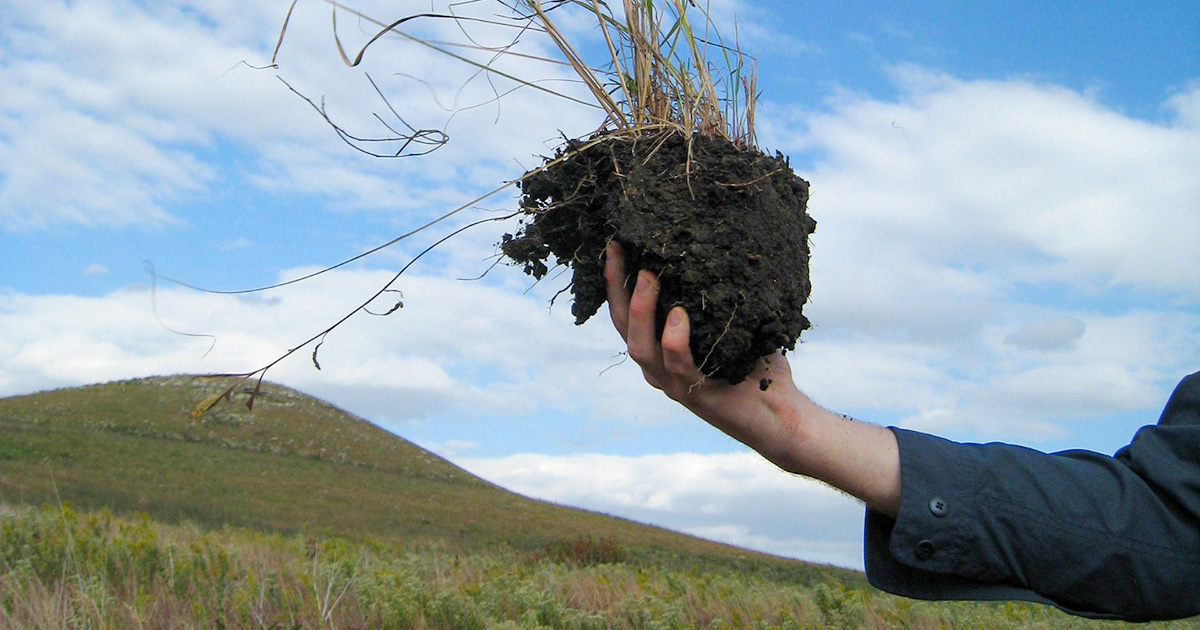As the negative effects of climate change become more prevalent in our daily lives, one direction we should look to find solutions is down—at the soil beneath us. Soils play a fundamental role in Earth’s climate, absorbing about one quarter of carbon dioxide emissions. In addition to playing this critical role in supporting planetary health, soils help local ecosystems by supporting crop production, filtering and storing water, fostering biodiversity, and recycling nutrients and energy.
On the 10th annual World Soil Day, we need to consider ways to care for our soil so it can continue to help our communities and planet thrive for years to come, and regenerative agriculture is one promising solution. Regenerative soil management can advance local and global well-being. But data and evidence are needed at the local level to support investment in regenerative practices that can help mitigate climate change.
Investing in regenerative agriculture and its mitigation potential at a global level
The International Panel on Climate Change estimates that agriculture is responsible for about 23 percent of total greenhouse gas emissions that contribute to climate change. Regenerative agriculture can restore soil carbon and improve soil health through techniques such as reducing tillage, keeping soil covered, and diversifying crop rotations, and could sequester 4–8 gigatons of carbon dioxide per year (one gigaton is equal to one billion metric tons). Its potential has led to significant investment from governments, donors, and private sector voluntary carbon markets. In fact, the Food and Agriculture Organization estimates that global investments in agroecology and regenerative agriculture approached $44 billion in 2023. But this is only a fraction of the $250–$430 billion per year the organization believes is needed to achieve a global transition to more sustainable agriculture.
To bridge this financing gap, a coalition of global philanthropies has committed to increasing funding for regenerative agriculture tenfold by 2040. The World Business Council on Sustainable Development, a CEO-led corporate social responsibility organization, reports that the private sector has invested $3.6 billion in regenerative agriculture over the past five years. However, if these investments are to support climate change mitigation at a global level, they must first be informed by evidence uncovered at the local level.
Addressing evidence gaps to highlight the local benefits of regenerative agriculture
Almost half of the world’s population lives in households linked to agrifood systems, so regenerative agriculture can benefit local farmers and land managers. For example, regenerated soils can trap carbon that contributes to climate change while also reducing the risk of local crop loss. Reducing the impacts of climate events that are harmful to crop yields—such as drought and flooding—will become more important as they become more frequent and severe amid climate change.
Local farmers and land managers need to adopt regenerative farming practices to fully realize its co-benefits, but this would require learning a new way to farm. To convince local farmers of the potential value of regenerative agriculture, they need to see more evidence about the connection between its local and global benefits.
Carbon in soil affects community and climate
The data that can build the necessary evidence base for regenerative farming can be gathered from diverse sources. These include soil samples, farm management records, public records, process-based models, geospatial and remote sensing inputs, and artificial intelligence-generated insights. By using digital tools to integrate these sources, decision makers can create global soil information systems that can help improve their understanding of the impact of regenerative agriculture on crop yields and climate. These systems should have a foundation in soil sampling designs, high-quality and efficient soil analysis tools, and process-based models with demonstrated accuracy.
Rigorous evaluations that focus on soil health, crop yields, and farmer returns can uncover evidence needed to assess both the longer-term climate impacts and near-term local community impacts of regenerative agriculture investments and policies. One way to access the data needed for these evaluations is to integrate public records on jurisdictional economic data—such as employment, food security, and poverty indicators—with other geospatial data sets. This enables analysis of variations in policy outcomes at larger scales and of how underlying soil characteristics can help predict those outcomes. For example, in the U.S., lower crop insurance claims have been used to demonstrate the connection between the effects of regenerative agriculture on soil carbon and resilience to climate change. These evaluations often require access to multiple years of data, advanced digital solutions, and careful study design.
As we celebrate World Soil Day, we must not overlook the critical role soil plays in regulating our global climate and the role of soil health in helping communities adapt to climate change. Equipped with a robust evidence base, we can encourage further investments in sustainable agriculture solutions and climate mitigation strategies that will bring socioenvironmental and socioeconomic benefits.



